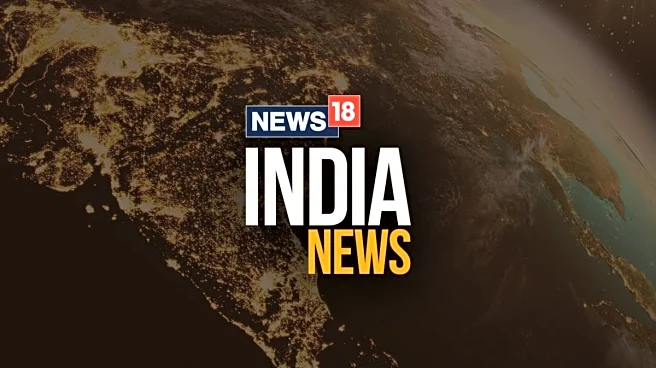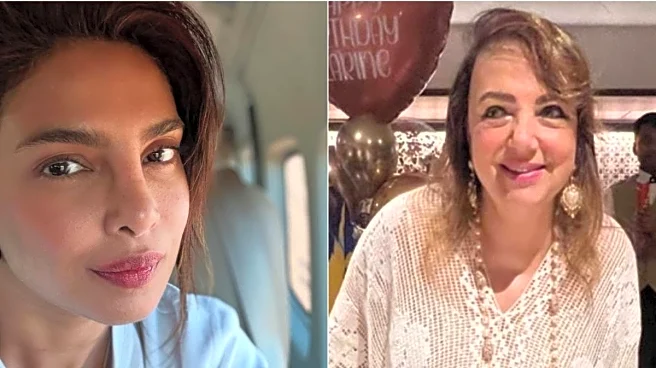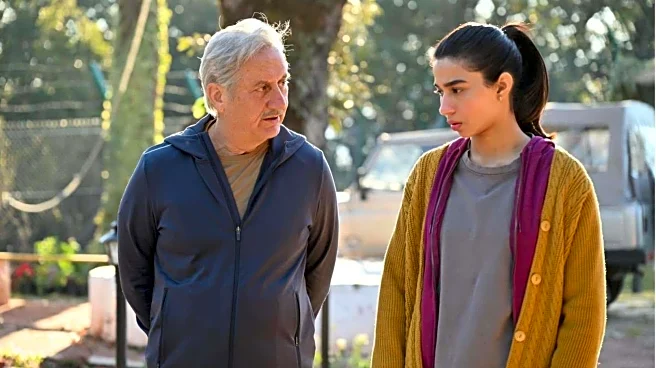What is the story about?
For more than a century, Indian cinema has reflected the aspirations and anxieties of the society that creates and consumes it. Yet one truth has remained stubbornly consistent: women have had to fight for visibility, recognition, and authority in the largely male-run industry. Their progress has not been straightforward. It has been shaped by resistance, negotiation, rebellion and persistence.
As the 56th International Film Festival of India (IFFI) opens in Goa on November 20 with over 50 films helmed by women, we are not simply witnessing a celebratory moment. We are watching the outcome of a long struggle to claim the camera, the narrative, and the right to be more than on-screen muse or moral exemplar.
Early cracks in the wall
In the silent film era, even appearing on screen required defiance. When Dadasaheb Phalke made Raja Harishchandra in 1913, men played women because acting was considered improper for any woman with social standing. Yet within a year, Kamlabai Gokhale stepped into the frame, and with that one act, she challenged a deeply policed boundary of respectability.
The resistance was not limited to performance. Fatma Begum started her own studio in the 1920s and directed films rooted in mythology and fantasy. Her breakthrough was a declaration that women could shape film language, not just decorate it. Still, these were lonely battles. The industry continued to treat women as on-screen ideals rather than creative decision-makers.
Stardom without power
The talkie era introduced major female stars. Zubeida in Alam Ara (1931) and Sulochana in her peak years proved women could carry films and command high salaries. But power behind the scenes did not shift accordingly. Women could be the face of a film, but the pen, the budget, and the credit usually belonged to the other gender. This unfair separation between visibility and influence continued for decades.
After Independence: A slowly widening frame
Post-independence cinema allowed women to become the emotional and symbolic centre of larger narratives. Films like Mother India (1957) made womanhood a national metaphor. Regional cinemas in Bengal, Kerala, Assam, and Tamil Nadu began offering layered female characters long before mainstream Bollywood tabled the idea. However, true authorship remained uneven. Even when women appeared at the heart of stories, the point of view often belonged to men.
Shift of the new millennium
The real change arrived when women began shaping scripts, direction, production and financing. Films like Kahaani (2012), Queen (2013), Piku (2015) and Raazi (2018) were not simply “woman-led.” They were created from female experience, had an unmistakable female gaze. They re-centred emotional logic and challenged the default male narrative priorities, highlighting that creative authority and not screen time is the real deal.
Today, powerhouses such as Mira Nair, Priyanka Chopra, Guneet Monga, and Payal Kapadia are defining how Indian cinema proliferates globally, acting as catalysts, giving our stories the legs needed to travel far and wide.
Meanwhile, female actors such as Deepika Padukone, Alia Bhatt, Taapsee Pannu, Kriti Sanon, and Kangana Ranaut have established their own production companies that actively choose which stories are worth telling. They are not only starring in films but making them, putting women in the lead—not just as romantic interests, but as full, complex protagonists tackling myriad, all-encompassing issues such as identity, agency, ambition and sexism.
IFFI 2025: Meaningful visibility
This year’s IFFI selections include works by female directors from India, China, Taiwan, and beyond. Jury panels, mentorship programs, and retrospectives place women in evaluative and curatorial positions, not just creative ones. This is where change becomes systemic. When women shape not only the film but the conditions under which they are judged and circulated, the cultural vocabulary expands.
Unfinished task
But progress does not equal resolution. Studio-scale budgets still overwhelmingly favour male-led projects. The distribution pipeline continues to assume male narratives as default. Until women have equal access to finance and decision-making boards, representation will remain fragile.
Yet the movement is irreversible. The story of women in Indian cinema has shifted from presence to authorship. Not from silence to speech, but from being spoken for to speaking on their own terms. The question now is no longer whether women will influence the future of Indian cinema. It is how thoroughly their vision will reshape what Indian cinema believes is possible.
As the 56th International Film Festival of India (IFFI) opens in Goa on November 20 with over 50 films helmed by women, we are not simply witnessing a celebratory moment. We are watching the outcome of a long struggle to claim the camera, the narrative, and the right to be more than on-screen muse or moral exemplar.
Early cracks in the wall
In the silent film era, even appearing on screen required defiance. When Dadasaheb Phalke made Raja Harishchandra in 1913, men played women because acting was considered improper for any woman with social standing. Yet within a year, Kamlabai Gokhale stepped into the frame, and with that one act, she challenged a deeply policed boundary of respectability.
The resistance was not limited to performance. Fatma Begum started her own studio in the 1920s and directed films rooted in mythology and fantasy. Her breakthrough was a declaration that women could shape film language, not just decorate it. Still, these were lonely battles. The industry continued to treat women as on-screen ideals rather than creative decision-makers.
Stardom without power
The talkie era introduced major female stars. Zubeida in Alam Ara (1931) and Sulochana in her peak years proved women could carry films and command high salaries. But power behind the scenes did not shift accordingly. Women could be the face of a film, but the pen, the budget, and the credit usually belonged to the other gender. This unfair separation between visibility and influence continued for decades.
After Independence: A slowly widening frame
Post-independence cinema allowed women to become the emotional and symbolic centre of larger narratives. Films like Mother India (1957) made womanhood a national metaphor. Regional cinemas in Bengal, Kerala, Assam, and Tamil Nadu began offering layered female characters long before mainstream Bollywood tabled the idea. However, true authorship remained uneven. Even when women appeared at the heart of stories, the point of view often belonged to men.
Shift of the new millennium
The real change arrived when women began shaping scripts, direction, production and financing. Films like Kahaani (2012), Queen (2013), Piku (2015) and Raazi (2018) were not simply “woman-led.” They were created from female experience, had an unmistakable female gaze. They re-centred emotional logic and challenged the default male narrative priorities, highlighting that creative authority and not screen time is the real deal.
Today, powerhouses such as Mira Nair, Priyanka Chopra, Guneet Monga, and Payal Kapadia are defining how Indian cinema proliferates globally, acting as catalysts, giving our stories the legs needed to travel far and wide.
Meanwhile, female actors such as Deepika Padukone, Alia Bhatt, Taapsee Pannu, Kriti Sanon, and Kangana Ranaut have established their own production companies that actively choose which stories are worth telling. They are not only starring in films but making them, putting women in the lead—not just as romantic interests, but as full, complex protagonists tackling myriad, all-encompassing issues such as identity, agency, ambition and sexism.
IFFI 2025: Meaningful visibility
This year’s IFFI selections include works by female directors from India, China, Taiwan, and beyond. Jury panels, mentorship programs, and retrospectives place women in evaluative and curatorial positions, not just creative ones. This is where change becomes systemic. When women shape not only the film but the conditions under which they are judged and circulated, the cultural vocabulary expands.
Unfinished task
But progress does not equal resolution. Studio-scale budgets still overwhelmingly favour male-led projects. The distribution pipeline continues to assume male narratives as default. Until women have equal access to finance and decision-making boards, representation will remain fragile.
Yet the movement is irreversible. The story of women in Indian cinema has shifted from presence to authorship. Not from silence to speech, but from being spoken for to speaking on their own terms. The question now is no longer whether women will influence the future of Indian cinema. It is how thoroughly their vision will reshape what Indian cinema believes is possible.
Do you find this article useful?
/images/ppid_59c68470-image-176269754906833774.webp)

/images/ppid_a911dc6a-image-176250203030788775.webp)
/images/ppid_59c68470-image-176242753535910226.webp)









/images/ppid_a911dc6a-image-176262802573969371.webp)

/images/ppid_a911dc6a-image-176261412484783648.webp)
